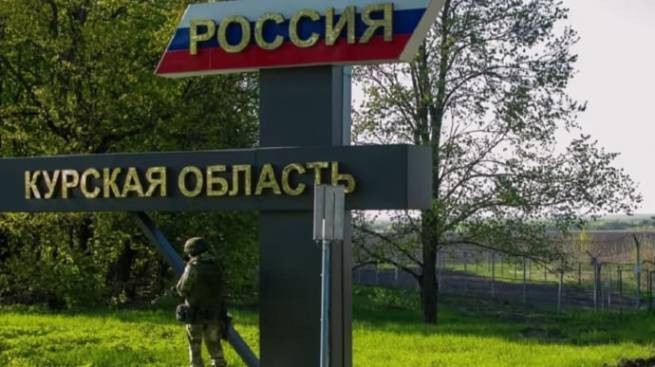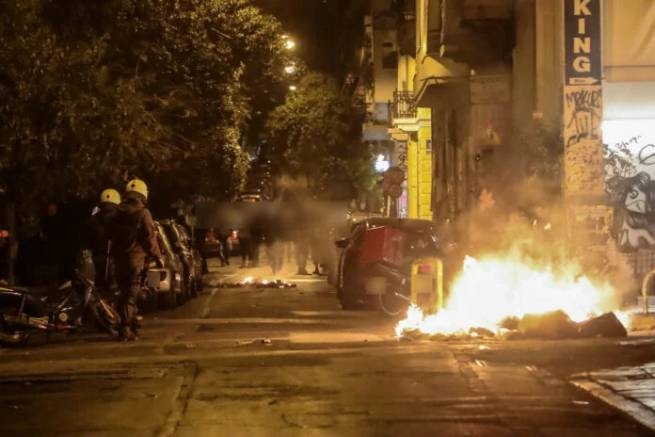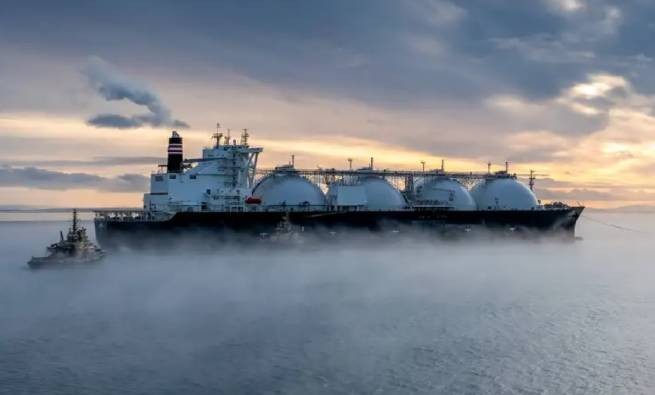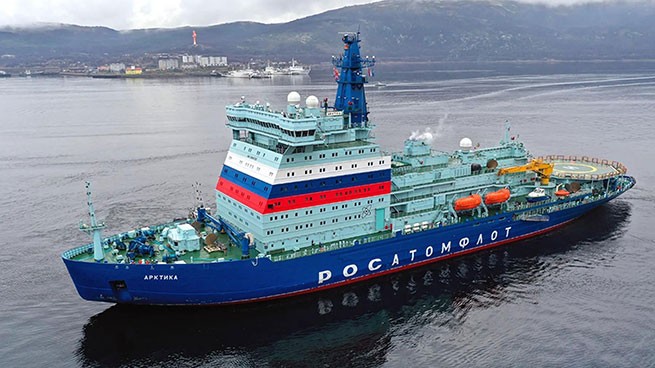How Rosatom is changing the Northern Sea Route: from nuclear icebreakers to year-round navigation. Impact on global logistics and the future of the Arctic.
I just wanted to write an article about gas station country. The country that isolated from everyone. Rogue state. I present to your attention one of the gcorporations of Russia.
Rosatom is a Russian state corporation that was established in 2007 on the basis of the Ministry of Atomic Energy of the Russian Federation (Minatom). Today, it is one of the largest players in the global nuclear industry, engaged in the development, production and management of nuclear energy. Rosatom unites more than 450 enterprises and organizations, where over 350 thousand people work. The corporation's activities cover a wide range of areas: from nuclear energy and nuclear fuel production to the development of nuclear weapons and innovative technologies.
Main areas of Rosatom activity
- Nuclear power
Rosatom operates Russia's nuclear power plants, develops and builds new facilities. It is Russia's largest producer of electricity generated by nuclear power plants.
- Nuclear fuel
The corporation controls the entire cycle of nuclear fuel production, from uranium mining to its processing for use in nuclear power plants.
- Nuclear weapons and defense technologies
Rosatom plays a key role in the development and maintenance of Russia's nuclear arsenal.
- Innovations and technologies
Rosatom is actively developing new technologies, including the construction and operation of floating nuclear power plants, the development and implementation of small modular reactors, as well as work in the field of nuclear medicine.
- International cooperation
The corporation ranks first in the world in terms of the size of its portfolio of orders for the construction of nuclear power plants: 39 power units (including six low-power units) are at various stages of implementation in 10 countries.
- Environmental programs
Rosatom is engaged in the disposal of radioactive waste, the rehabilitation of contaminated areas and the development of environmentally friendly technologies.
Northern Sea Route (Northern Sea Route)
The Northern Sea Route is a strategically important sea route that runs along the northern coast of Russia through Arctic waters and links Europe and Asia. The route provides an alternative to traditional sea routes through the Suez Canal. However, navigation along the Northern Sea Route has long been limited due to harsh Arctic conditions and significant ice cover, making it accessible for shipping only in the summer.
Previously, the shipping season along the Northern Sea Route lasted from July to October, when the ice conditions were most favorable. In the winter months, navigation along the route was virtually impossible without the use of nuclear icebreakers that could cut a path through the thick ice.
However, climate change is causing the Arctic to melt faster. Temperatures in the region are rising twice as fast as the global average, causing ice cover to shrink significantly. Scientists predict that the Arctic region could become completely ice-free in the summer months by 2030. This would open up the possibility of year-round navigation along the Northern Sea Route, which was previously impossible.
The reduction in ice cover facilitates the passage of ships and reduces the need for icebreaker escorts, which in turn reduces transportation costs and makes the route more competitive compared to traditional routes through the Suez Canal.
Rosatom's activities on the Northern Sea Route
Let's not talk about grandiose plans, just dry facts:
- Construction of nuclear icebreakers
Rosatom is building a new series of nuclear icebreakers of Project 22220, designed for year-round operation on the Northern Sea Route. These icebreakers have powerful nuclear reactors and are capable of breaking through ice up to 2.8 meters thick. Their main purpose is to ensure year-round navigation, which was previously impossible due to harsh climatic conditions.
- In 2020, the nuclear icebreaker Arktika was put into operation – the most powerful in the world, capable of guiding large-tonnage vessels.
- In January 2022, the second nuclear icebreaker in the series, Sibir, began operations.
- In December 2022, the third nuclear icebreaker in the series, Ural, completed its first working voyage.
- In 2024 and 2026, it is planned to commission the nuclear icebreakers Yakutia and Chukotka, respectively.
- Floating nuclear power plants

(source: Rosatomflot)
Rosatom is developing and building floating nuclear power plants that will provide energy to Arctic ports and facilities along the Northern Sea Route. These plants are necessary to ensure stable operation of infrastructure in remote and hard-to-reach regions of the Arctic.
– Construction is currently ongoing. four floating nuclear power plantswhich will provide energy to Arctic ports and facilities, allowing year-round navigation to be maintained.
- Infrastructure coordination and management
Rosatom coordinates the development of the Northern Sea Route infrastructure, including the creation and modernization of ports, the introduction of modern navigation systems and ensuring environmental safety. Active monitoring of ice conditions and the development of optimal routes for ships are conducted.
– Regular routes between Murmansk and Kamchatka with subsidized tariffs were created, which made it possible to increase the loading of ships from 15% to 90% on the first voyages.
– The number of ports on the route has been increased from 4 to 11and the line to Vladivostok was expanded, which significantly improved the logistics network and increased the volume of transportation along the Northern Sea Route.
- Expansion of cargo flows
Rosatom and the Ministry for the Development of the Russian Far East and Arctic are actively working to increase the volume of cargo transportation along the Northern Sea Route. The goal is to reach a transportation volume of 100 million tons by 2026 and 200 million tons by 2030.
– From 2014 to 2022, the volume of cargo transportation along the Northern Sea Route increased from 4 to 34 million tons. This indicates a significant increase in interest in the route from Russian and international companies.
– Agreements have already been reached on the transportation of such important goods as oil, LNG, mineral fertilizers and metals, which has made the Northern Sea Route a key transport corridor for the export of high-value products.
These efforts by Rosatom are aimed at transforming the Northern Sea Route into a full-fledged and competitive transport artery capable of withstanding global economic and climate challenges.
It really does seem like an article from the Great Soviet Encyclopedia, doesn't it? They plan, build and even put into operation. In our time. Miracles.
Author's opinion: Russia is the only country in the world that builds ships of this type. In the USA There is one heavy icebreaker “Polar Star”which was commissioned back in 1976. It continues to serve, but its age necessitates a fleet renewal.
“Xue Long 2” (Xuelong-2) is the first independently built Chinese icebreakerwhich entered service in 2019. It is classified as a medium icebreaker, capable of operating in both the Arctic and Antarctic. This icebreaker is capable of breaking through ice up to 1.5 metersand its main role is to conduct scientific expeditions and support research in the polar regions.
“CCGS John G. Diefenbaker” (planned) – heavy icebreaker (Canada). Planned commissioning date: papproximately 2029
And that's it. I have nothing more to please or upset you with. And I wrote an article about only 1 corporation in Russia…







More Stories
Democrats reject Trump's proposal to require voters to show proof of US citizenship
Woman's Desperate Fight With Python Ends With 4-Meter Snake Defeated (Video)
By refusing to pay the fine, Orban could lose some of the funds allocated to him by the EU